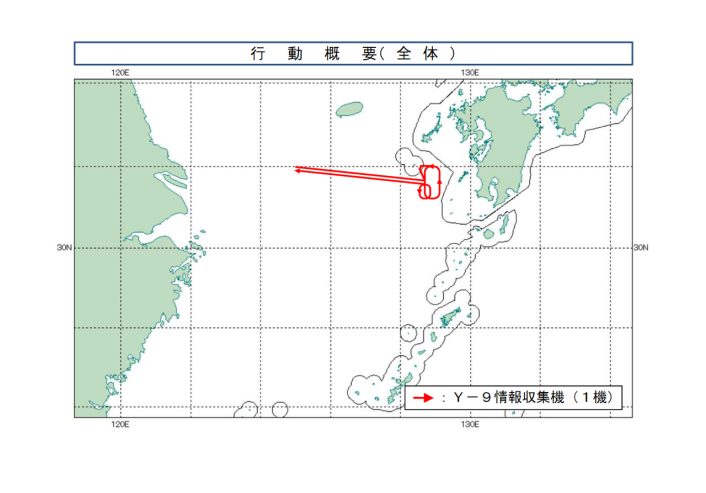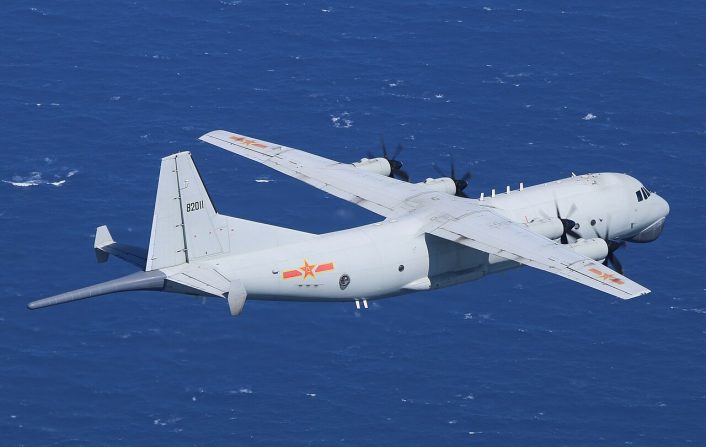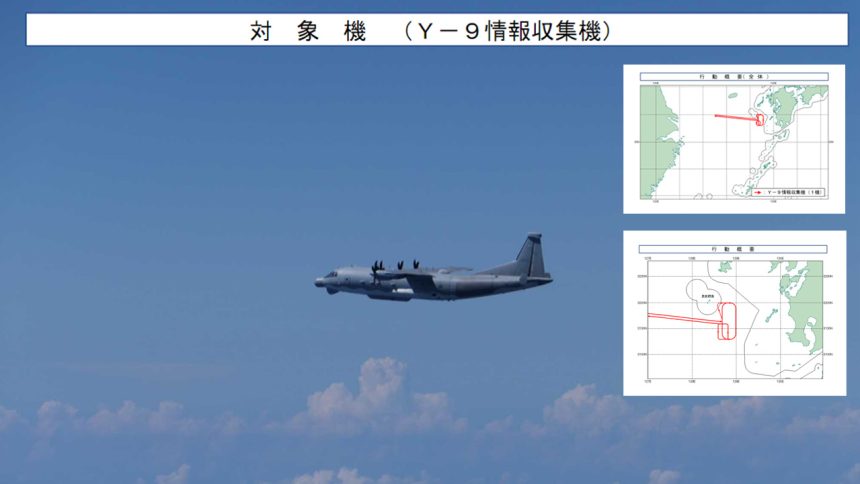For the first confirmed time, a Chinese military intelligence gathering flight off the coast of Japan briefly entered territorial airspace south-east of the uninhabited Danjo Islands.
On Aug. 26, 2024, the Japanese Ministry of Defense reported that a Chinese military Y-9 intelligence aircraft violated Japanese territorial airspace near the Danjo Islands, approximately seventy kilometers southwest of Gotō, Nagasaki prefecture. The incursion happened following a sortie in international airspace off Nagasaki and lasted approximately two minutes, from 11:29 to 11:31 local time.
Japan Air Self-Defense Force (JASDF) aircraft assigned to the Western Air Defense Force were launched to intercept the aircraft and issued radio warnings to the Chinese intruder. After the Y-9 departed territorial airspace it continued on mission until around 13:15 local time, afterwards departing back towards the People’s Republic of China.

Ministry of Defense officials could not say whether the Chinese crew acknowledged or responded to radio calls, but did confirm that no flares or weapons were activated by the Y-9.
In a statement to Japanese news agency NHK, a government spokesperson said: “This violation of Japanese airspace is extremely regrettable, and we have lodged a very strong protest to the Chinese government through diplomatic channels and strongly urged them to prevent recurrence.”
Okano Masataka, Japan’s Vice-Minister for Foreign Affairs, summoned Shi Ying, the Chinese Embassy Charge d’Affaires, to issue a strong protest against the incursion. Ying responded that this would be communicated to her home country.
This is the first known instance of a Chinese military unit making an unauthorized entry into Japan’s sovereign territory. Previous incursions have involved non-military government units belonging to the China Coast Guard and the State Oceanic Administration.
The Shaanxi Y-9 was developed in the 2000s as a four engined cargo aircraft comparable to the Lockheed C-130J. Based on the Shaanxi Y-8, which in turn was a development of the Antonov An-12, the aircraft entered service with the People’s Liberation Army Air Force (PLAAF) in 2012 and reached full operating capability in 2017.
Much like the C-130 it is an analogue to, the Y-9 base platform has been developed into several special mission variants. The KQ-200 is equipped with sonobuoy launchers, a weapons bay and various sensors, and serves as the People’s Liberation Army Naval Air Force’s (PLANAF) primary maritime patrol aircraft, while the KJ-500 features a large dorsal radome and is China’s most numerous airborne early warning aircraft.

The Y-9 involved in this most recent incident appears to be a Y-9DZ variant, equipped with a synthetic aperture radar on the underside of the fuselage. This variant was first photographed by the Japanese military in June 2023.
A possible target for the intelligence gathering equipment of the Y-9 aircraft could have been the naval base at Sasebo, Nagasaki prefecture. Sasebo is the headquarters of one of five Japan Maritime Self-Defense Force districts, and is the homeport for several of Japan’s Aegis Combat System equipped guided missile destroyers as well as the helicopter carrier Ise (DDH-182).
展海峰から佐世保方面に目を向けると、停泊中のDDH-182 いせ が見えました。#長崎県 #佐世保 pic.twitter.com/XKctJpFFKr
— TNKG リュウ (@t_koryu062123) August 23, 2024
Co-located with the Japanese naval fleet is U.S. Fleet Activities Sasebo, the current homeport for Amphibious Squadron 11 with USS America (LHA-6), USS New Orleans (LPD-18), USS Green Bay (LPD-20), and USS Rushmore (LSD-47). However, the F-35B equipped USS America is currently at sea in the Philippine Sea.
.@PacificMarines conduct F-35B Lightning II aircraft flight operations aboard #USSAmerica, strengthening #Readiness and #JointForce capabilities to provide maritime assets in defense of peace and stability in the #FreeAndOpenIndoPacific.
📸: MCSN Darian Lord pic.twitter.com/3c5i6nCN28
— U.S. Indo-Pacific Command (@INDOPACOM) August 25, 2024
This latest incident, while the first to breach sovereign airspace, is the latest in a long series of PLAAF and PLANAF flights around Japan’s coastline and exclusive economic zone (EEZ), including both manned and unmanned aircraft. Japan scrambled aircraft 479 times in the 2023 financial year to intercept Chinese aircraft, and 575 times the previous year. Additional intercepts are made on a less frequent basis to counter sorties by Russian aircraft.
Both Japan and the People’s Republic of China maintain overlapping Air Defense Identification Zones (ADIZ) over the East China Sea. These zones are areas outside of sovereign airspace where each country publicly states an aim to monitor and track all aircraft movements in the interests of national security. The Chinese ADIZ, established in 2013, is controversial as it covers the airspace over the Senkaku Islands. The islands are controlled and administered by Japan, but are claimed by both the People’s Republic of China and by Taiwan.









